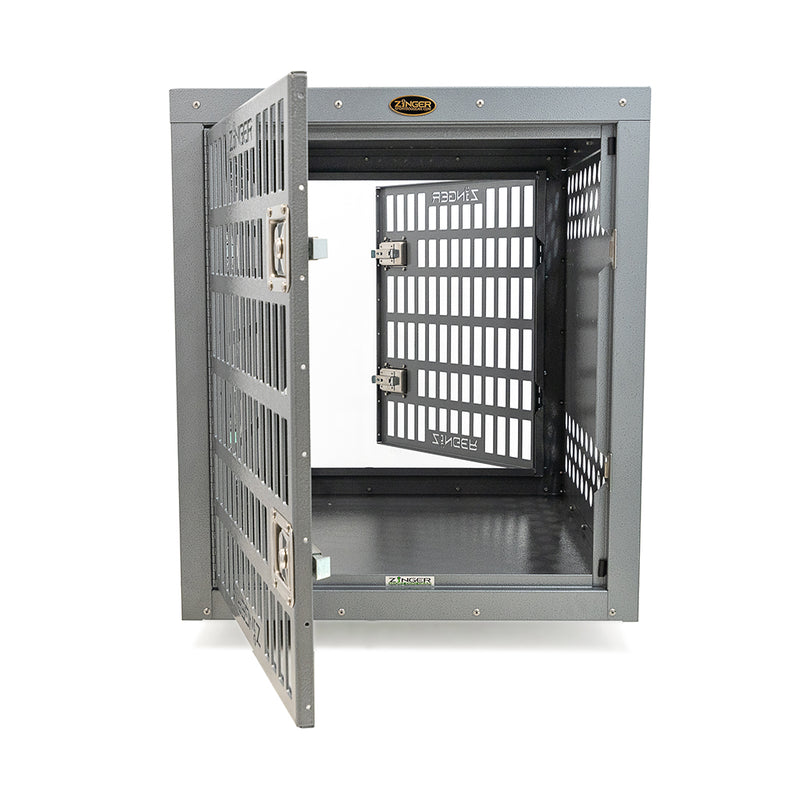Your Cart is Empty
Electronic Collars
Collars and Leads
Dog Tracking Systems
Dog Training
Bird Launchers
Hunting Dog Supplies
For The Hunter
Selecting the Right E-collar for Your Dog
March 04, 2016 6 min read

Selecting your e-collar
Below is the most recent post in our e-collar series titled Selecting the Right E-collar for Your Dog. To learn more about the very basics of e-collars read our previous post.
With the e-collars limited functionality and the lack of e-collar training know-how, e-collars were not always favorable among dog handlers in the early years. But today's e-collars are capable of delivering controlled stimulation that is not much more than that of an insect bite, and they can be dialed in gradually to the correct intensity for sensitive to hardier breeds, eliminating the stigma of the shock collar. E-collars make unmanageable dog behavior more manageable, thereby keeping your pet safer. There are more dog handlers using e-collars today than ever before.
The first step in your e-collar purchase is to determine if you actually need an e-collar. Here are two reasons to use an e-collar.
1. Teach basic commands
2. Break bad behavior
Teach Basic Commands
Do you actually need to introduce an e-collar to your dog training regimen? If you dog is performing obedience commands to your satisfaction without an e-collar then you don't need one. However, in some cases dogs will not obey commands when faced with distractions. Ask yourself this simple question. Does my dog always respond to commands: come, kennel, off, down, sit, stay, and heel. Most dogs do not respond to these commands every time.
Break Bad Behavior
Most dogs pick up a few bad behaviors during their lifetime. Some dogs will chase wildlife, some chase after cars, some jump on people and furniture and run from their handlers. Does your dog have any of these behavior issues.
If you answered yes (and most of you probably did) then your dog's behavior training might benefit from an e-collar.
Main Features to Consider
There are many features to consider when selecting the right training e-collar but the features that will affect cost and performance the most are range, expandability, modes of stimulation, tone and vibration. Many of the other features such as battery life, charge time, antennae, and waterproof features are important but are also standard on most collars.
Collar Range
Perhaps the easiest way to categorize e-collars is by their effective range. Our collars are categorized by mile, - to 1 mile range, and over 1 mile range. The range you should choose is based on the type of dog you have and the environment you run your dog.
- Up to 1/2 mile range - usually entry level training collars perfect for basic obedience training and correcting behavior problems in dogs in the yard or at the park, but also capable of handling the demands of higher energy dogs running close to you. Prices range $100-$300.
- 3/4 to 1 mile range - a mid-level training collar for upland pointer and retriever dogs with a closer working range, but also flexible use for daily obedience training. Prices range from $299 - $399.
- Over 1 mile range - these collars are perfect for running pointers, hounds and versatile hunting dogs with a wider range. Cost ranging $289 - $599.
Expandability
Most entry level obedience collars are capable of only managing one dog, but for a few dollars more you'll have an e-collar that is expandable to accommodate two or more dogs. Advanced units are expandable up to six or more dogs.
Various Stimulation Levels
Various stim levels are important because you'll need to find for your dogs tolerance without over stimulating him. For most hunting dogs you'll want a system with at least 8 momentary and continuous stimulation levels.
Tone and Vibration Options
Tone and vibration features reduce the frequency you'll need to stimulate your dog. Tone sends audio signals to the dog that can be interpreted as commands and the vibration will warn your dog prior to an actual stimulation, giving him the chance to correct himself.
Type of Dog Training
Now that we have the basics out of the way let's take a look at the collars I would choose for different dog types and training. Then you can use these examples to select your favorite collar for your dog.
Pointer Training
Some bird dogs will work a closer range to you while others run wider, but no matter how close the range your bird dog runs you'll want to purchase a collar with a range of at least 1 mile. I am leaning toward a collar with range over 1 mile for my Brittany Spaniel because although he may work close range to me, there is the chance he could get on a deer scent and exceed 1 mile. I like the SportDOG SportHunter 1825X e-collar because of its longer range and expandability. It also makes a good obedience collar and can be used to work both my Brittany and my very stubborn Staffordshire Terrier.
Retriever Training
Most retrievers work close so collar range isn't as important as selecting the system with features that will get the job done and withstand the punishment of waterfowl hunting. But don't go cheap on range and do select a collar with mile range or more. Important features for retriever training are variable nick and continuous stimulation levels, tone and vibration, and a waterproof system. I like the DT Systems H20 1850 Plus because the system is 100% waterproof and expandable up to three dogs. Also the transmitter is fully buoyant and the easy grip coating prevents slipping from your hand.
Hound Training
The features that most hound runners expect in an e-collar are range and ease of use. Beagle hunters will want at least 1 mile of range and hound hunters may want more. Some hunters want a collar with expandability to run multiple dogs but for others expandability is not a concern. Also features like multiple stimulation levels, tone and vibration is not as important as longer range and ease of use. One of our hound handlers uses the Garmin Tri-tronics Pro 70 because it is very easy to use in the heat of the moment, and although the Pro 70 range is only 1 mile it will keep up with her hounds. The Pro 70 is also expandable up to 6 dogs if she decides to expand her kennel. I like the SportDOG Prohunter 2525 for hound training because of its two mile range and expandability.
Mild Mannered Dog Training
So we've covered the types of collars for training hunting dogs but what type of collar should we use for training the family pet? These basic obedience collars usually have limited range and functionality, and the model you select should depend on your dog's size and personality, so a small mild mannered dog with a range no farther than the backyard or local park would only require the SportDOG YardTrainer 300. Another system I like is the SportDOG FieldTrainer 425S for stubborn dogs like my Staffordshire Terrier. Designed for obedience training, it has seven levels of stim with tone and vibrate and it expands to three dogs. Waterproof and shockproof - it's a good system for yard work but can also endure rugged field conditions.
Let's Recap
So we've learned that training e-collars are a good tool for training your family pet in the backyard or training your hunting dog in the field. Training collars can also be used to break bad behavior such as chasing wildlife and cars, and running from handlers. The main features that affect price and performance are range, expandability, stimulation levels, tone and vibration. Generally the greater the range and expandability, and the more options in tone and vibration, the better suited the collar will be for handling larger stubborn dogs and high energy hunting dogs. Basic obedience training of smaller, mild mannered dogs with range limited to the backyard or local park usually do not require the entire package of advanced features.
Lion Country Supply carries top brand e-collars made by SportDOG Brand, Garmin, DT Systems, Tri-Tronics, and Dogtra. Our collars range from entry level basic obedience trainers to advanced training collars for bird dog, retriever and hound training. I hope this blog post shines some light on your e-collar selection, but if you have questions or need help, you can call our customer service department at 1-800-662-5202 for direct personal assistance with your e-collar purchase.
If you are new to e-collars be sure to read our previous blog post covering the basics of e-collars, and check back for our next blog post to learn about selecting tracking e-collars.
Leave a comment
Comments will be approved before showing up.
Subscribe
Sign up to get the latest on sales, new releases and more …
Featured Products

Subscribe
Sign up to get the latest on sales, new releases and more …



